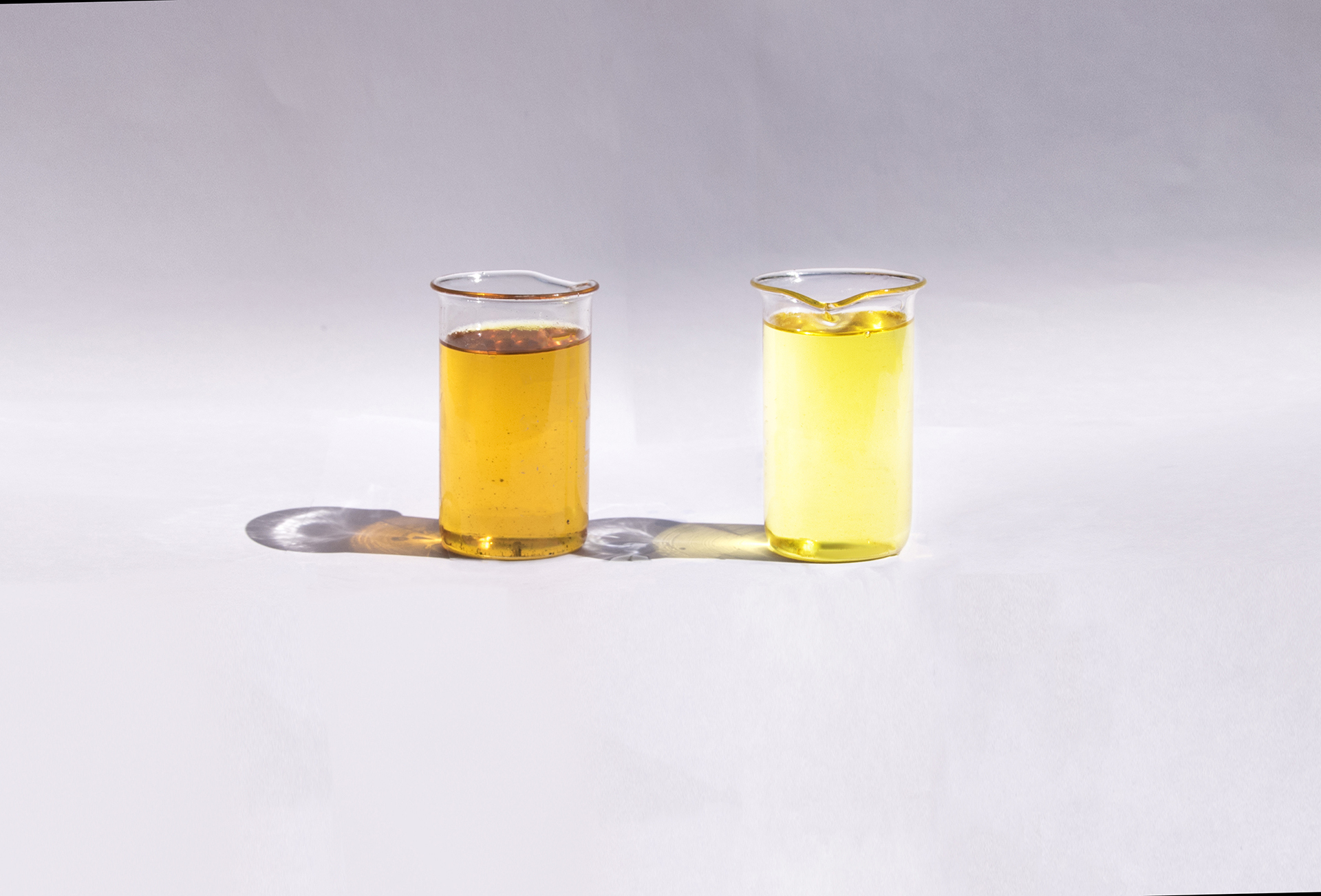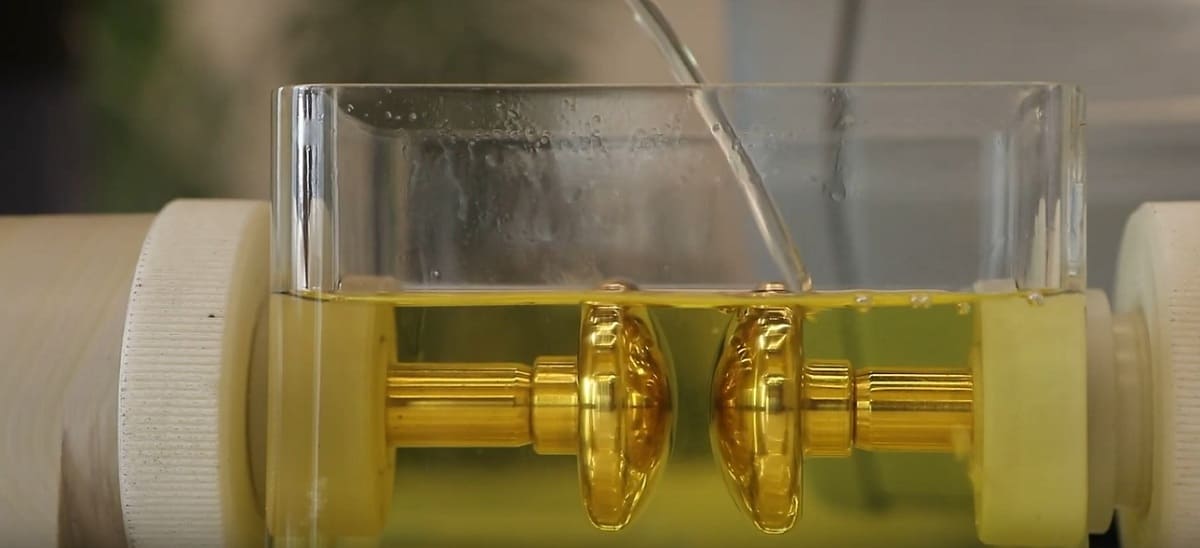Виробництво водовугільного палива

Завданням нашого експерименту було подрібнення вугілля фракції 10-15 мм до вугільного пилу розміром 0-300 мкм та змішування його з водою і пластифікатором для отримання водовугільного палива (ВУП). Цей експеримент ми проводили за допомогою вихрового апарату АВС-150.
Основним принципом приготування водовугільного палива є забезпечення стабільності подрібнення вугілля із заданими параметрами та точне дотримання концентрацій допоміжних речовин, що призводить до покращення реологічних властивостей та стабільності горіння.
Для проведення експерименту було взято 600 г вугілля, 400 мл попередньо очищеної води та поліфосфат як пластифікатор.
Для наочності експеримент проводився не в потоці, а в реакторі. Оптимальні для цього процесу характеристики магнітної індукції ми вимірювали за допомогою мультиметра.
На першому етапі ми подрібнювали “сухе” вугілля фракції 10-15 мм. Подрібнення тривало 2 хвилини за допомогою феромагнітних частинок діаметром 2 мм і довжиною 20 мм.
Ми перевірили результат подрібнення за допомогою тестових сит 316 мкм, 160 мкм і 50 мкм. 96% зразка пройшло через сито 316 мкм, після чого ми пропустили просіяний зразок через сито 160 мкм, відсіявши 60%, і через сито 50 мкм, де було відсіяно лише 10% зразка.
На другому етапі ми подрібнювали вугілля фракції 10-15 мм мокрим способом з отриманою при цьому водно-вугільною сумішшю. Grinding and mixing lasted for 2 minutes. The grinding results were checked by means of sieves after drying the sample. 98% of the sample passed through a 316 μm sieve, 86% of the sample passed through a 160 μm sieve, and 35% of the sample passed through a 50 μm sieve.
At the third stage, we mixed up the coal previously ground for 2 minutes. Mixing lasted for 30 seconds. The stability of obtained fuel had been checked for 5 days. As a result, the water and coal were slightly stratified; it is possible to maintain the CWF stability through periodic recirculation in storage tanks. In this case, using a plasticizer is not necessary. The results of sample grinding were checked by means of sieves after drying the sample. 98% of the sample passed through a 316 µm sieve, 90% of the sample passed through a 160 µm sieve, and 63% of the sample passed through a 50 µm sieve.
Based on the experiment results, the following conclusions can be drawn:
- the approximate capacity of AVS-150 device in the stream will be 3 m3/h;
- the power consumption will be 9 kW/h;
- as a result of thorough mixing in our device, it is not necessary that a plasticizer be added to CWF;
• the stream operation of the device can be continuous, because as the particles wear out, the additional loading thereof occurs automatically by means of a batcher.


